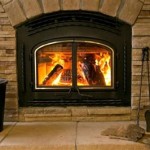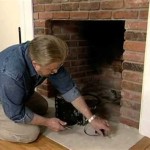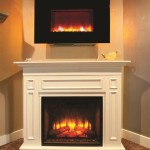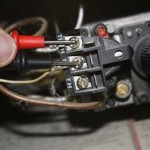Installing a Gas Fireplace in an Existing Home: A Comprehensive Guide
Adding a gas fireplace to an existing home can significantly enhance ambiance, provide supplemental heating, and potentially increase property value. This process, however, requires careful planning, adherence to safety regulations, and often, professional installation. This article provides a detailed overview of the steps involved, considerations to keep in mind, and the importance of professional assessment and execution.
The appeal of a gas fireplace lies in its convenience and efficiency. Unlike traditional wood-burning fireplaces, gas fireplaces offer instant ignition, consistent heat output, and minimal maintenance. There is no need to chop wood, clean ashes, or worry about creosote buildup in the chimney. Furthermore, modern gas fireplaces come in a wide variety of styles, from traditional log sets to contemporary linear designs, allowing homeowners to seamlessly integrate them into their existing décor.
Key Considerations Before Installation
Before embarking on a gas fireplace installation, several key factors need to be carefully evaluated. These include determining the appropriate fireplace size and style, assessing the existing structure, understanding local building codes, and budgeting for both the fireplace unit and the installation costs.
Fireplace Size and Style: The size of the room in which the fireplace will be installed is a crucial factor in determining the appropriate fireplace size (BTU output). A fireplace that is too large will overheat the space, while one that is too small will not provide sufficient warmth. The style of the fireplace should also complement the existing décor. Options range from traditional freestanding units to inserts designed to fit into existing fireplace openings, as well as wall-mounted and linear models.
Structural Assessment: The existing structure of the home needs to be assessed to determine its suitability for a gas fireplace installation. This includes evaluating the load-bearing capacity of the floor, the availability of a suitable venting system, and the proximity to a gas line. In some cases, structural modifications may be necessary to accommodate the new fireplace.
Building Codes and Permits: Local building codes and permit requirements vary widely. It is essential to research and comply with all applicable regulations before commencing any work. Failure to obtain the necessary permits can result in fines and delays. Codes often address venting requirements, gas line connections, and fire safety standards.
Budgeting: The cost of installing a gas fireplace can vary significantly depending on the type of fireplace, the complexity of the installation, and the labor costs in the area. It is advisable to obtain multiple quotes from qualified contractors to get a realistic estimate of the total cost. The budget should include the cost of the fireplace unit itself, venting materials, gas line installation, electrical work (if required), permits, and labor.
The Installation Process: A Step-by-Step Guide
The installation process for a gas fireplace involves several distinct steps, each requiring careful attention to detail and adherence to safety guidelines. While some homeowners may be tempted to DIY the installation, it is strongly recommended to hire a qualified and licensed professional due to the inherent risks associated with gas line connections and venting systems.
Gas Line Installation: This is arguably the most critical and potentially dangerous aspect of the installation. A qualified gas fitter will need to run a new gas line from the main gas meter to the fireplace location. This involves tapping into the existing gas line, running a new pipe, and pressure testing the system to ensure there are no leaks. It is imperative that this work be performed by a licensed professional to prevent gas leaks and explosions.
Venting Installation: Gas fireplaces require proper venting to exhaust combustion byproducts safely out of the home. There are two main types of venting systems: direct vent and B-vent. Direct vent systems draw air from outside the house for combustion and exhaust gases directly outdoors through a sealed vent pipe. B-vent systems, on the other hand, rely on natural draft and require a chimney or flue. The choice of venting system will depend on the type of fireplace and the configuration of the home. Incorrect venting can lead to carbon monoxide poisoning.
Fireplace Placement and Securing: Once the gas line and venting are in place, the fireplace can be positioned and secured according to the manufacturer's instructions. This may involve attaching the fireplace to the wall, floor, or both. The fireplace should be level and stable to prevent tipping or movement.
Electrical Connections: Some gas fireplaces require electrical connections for features such as blowers, remote controls, and electronic ignition systems. A qualified electrician should handle these connections to ensure they are properly wired and grounded according to electrical codes.
Testing and Inspection: After the installation is complete, the entire system should be thoroughly tested and inspected to ensure it is functioning correctly and safely. This includes checking for gas leaks, verifying proper venting, and testing the ignition system and other features. Many municipalities require a final inspection by a building inspector before the fireplace can be used.
Selecting a Gas Fireplace Unit: Types and Features
The market offers a diverse range of gas fireplace units, each with its own unique features, benefits, and aesthetic appeal. Choosing the right unit requires careful consideration of individual needs, preferences, and budget.
Gas Fireplace Inserts: These are designed to be installed into existing wood-burning fireplaces. They offer the convenience of gas heating while retaining the traditional look of a fireplace. Inserts are typically more efficient than open wood-burning fireplaces and can significantly reduce heat loss up the chimney.
Freestanding Gas Fireplaces: These units can be placed virtually anywhere in a room, as long as there is access to a gas line and a venting system. Freestanding fireplaces come in a wide variety of styles, from traditional to contemporary, and can be a focal point of a room.
Wall-Mounted Gas Fireplaces: These fireplaces are mounted directly on the wall and take up minimal floor space. They are a popular choice for modern and contemporary homes and can create a sleek and stylish look.
Linear Gas Fireplaces: Linear fireplaces are characterized by their long, horizontal flames. They are often used in modern designs and can create a dramatic and eye-catching effect.
Vent-Free Gas Fireplaces: These fireplaces do not require venting and can be installed almost anywhere. However, they are subject to restrictions in some areas due to concerns about indoor air quality. It is crucial to research local regulations before considering a vent-free gas fireplace.
Features to Consider: Beyond the basic type of fireplace, there are several features to consider, such as remote controls, thermostats, blowers, and different flame patterns. Remote controls allow for convenient operation from anywhere in the room, while thermostats help maintain a consistent temperature. Blowers circulate warm air more effectively, and different flame patterns can create a more realistic or visually appealing effect.
Properly installing a gas fireplace in an existing home can be a rewarding investment, providing warmth, ambiance, and potential energy savings. However, it's a project that demands careful planning, meticulous execution, and a solid understanding of safety requirements. Consulting with qualified professionals is essential to ensure a safe and successful installation.
Choosing the right type of gas fireplace depends on several factors. Consider the existing architecture and decor of the room. A modern, minimalist design might complement a linear gas fireplace, while a more traditional setting might benefit from a gas fireplace insert with a realistic log set. Evaluate the size and layout of the room. Smaller rooms may benefit from a wall-mounted or compact freestanding unit, while larger spaces can accommodate a larger fireplace with a higher BTU output. And, most importantly, ensure the chosen unit meets all safety standards and is properly vented.
Remember, the longevity and safety of your gas fireplace installation hinges on the quality of the workmanship. Choose experienced and licensed professionals who are familiar with local building codes and have a proven track record of successful installations. Regular maintenance, including cleaning and inspection, will further ensure the fireplace operates safely and efficiently for years to come.

Adding A Gas Fireplace To An Existing Home Just Log Fires

Adding A Fireplace To Existing Home Where For Fireplaces
How To Install Gas Fireplace Insert Heat Glo

How Much Does It Cost To Install A Gas Fireplace Homeserve Usa

Convert To Gas Installing Fireplace Inserts Doctor Flue

Existing Fireplace Or A Brand New Build Lopi Fireplaces

What Does It Cost To Install A Fireplace Vs Wood Stove Stamford Fireplaces

Gas Fireplace Cost Guide Unit Add Ons Installation More

Existing Fireplace Or A Brand New Build Lopi Fireplaces

Is A Gas Fireplace Worth It
Related Posts








